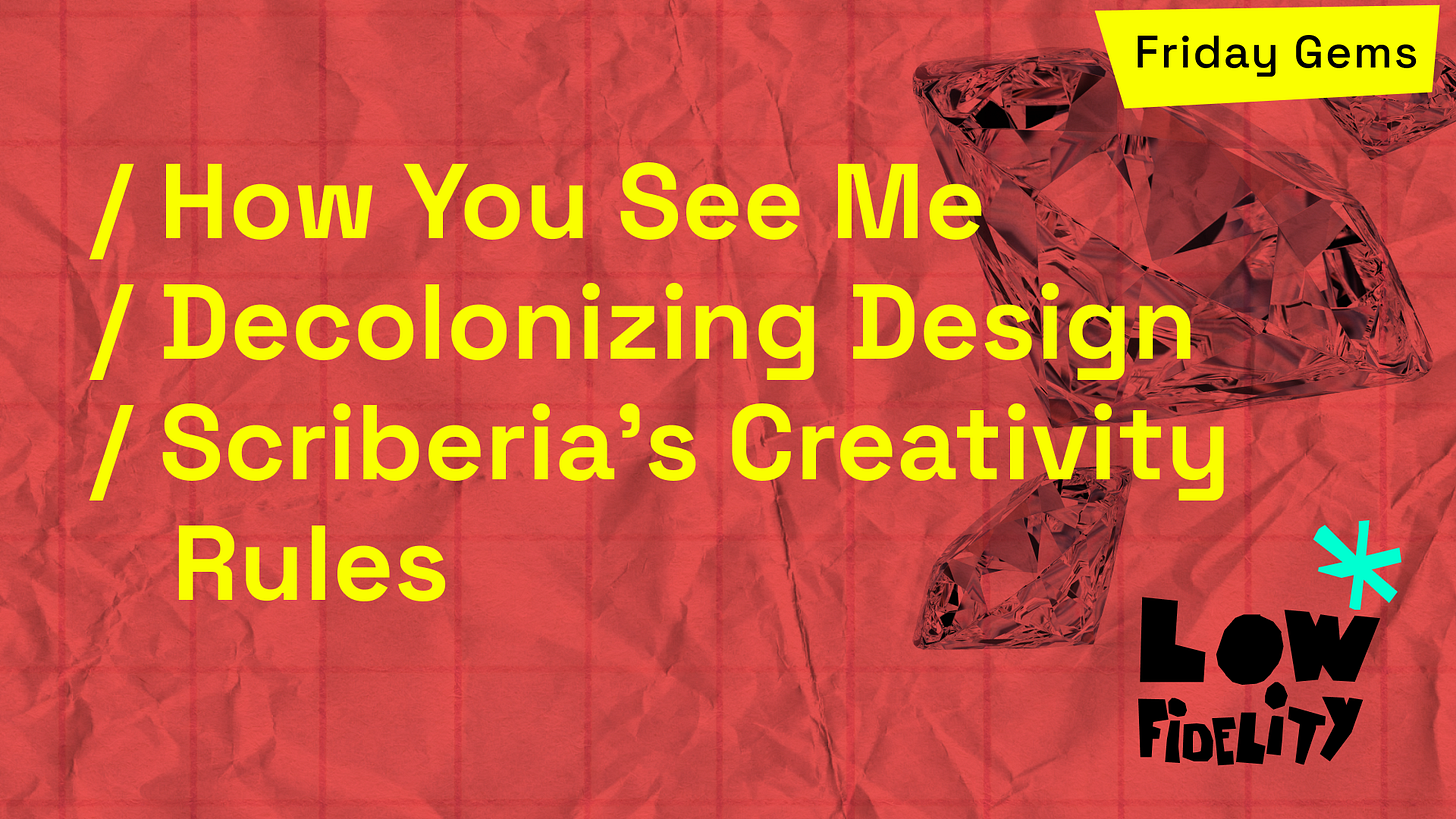💎 Friday Gems #18 (How you see me, Decolonizing Design, Creativity Rules)
Ideas to help you unleash your potential!
Hello curious people.
It’s been a few weeks since you have heard from me. In the background, I have been working on foundational work for Low Fidelity so I can help people who may be experiencing inner challenges in their work or life.
Gaining this clarity has helped me show up and share my message with confidence and determination because
I know exactly how it feels to be stuck in life, unable to progress towards our goals.
I know how it feels to watch the world go by while we stand on the sidelines with fear, doubt, and impostor syndrome holding me back.
I know how it feels to become imprisoned by our thoughts.
So I am on a mission to help people overcome their inner challenges by bringing awareness, developing resilience, and making an impact in their lives and the world so they can realize their full potential.
Low Fidelity is just getting started, so stay tuned for more!
I’m glad you are with me on this journey.
On to this week’s gems!
💎 Asian | How You See Me
"Chinese are not the same as Japanese, are not the same as Koreans, Filipinos, or Thai, or Indians..."
Representation matters. It matters that we share what makes us unique and the beauty of our different cultures. In this video, people from different Asian cultures speak up about the challenges they face living and growing up in America. I myself immigrated to the US and survived the bullying in high school as well as the struggle that comes from trying to fit in two cultures yet never belonging to either one completely.
Source: Participant
💎 Decolonizing Design
Recently at a workshop, I learned about the term "Decolonizing Design"” One of the participants used the term, and I had one of those wake-up moments and wondered why I hadn’t heard this phrase before.
Colonization is the oppression of indigenous people by seizing their resources and embedding Western ideology into their society. In the context of design, colonization refers to taking Eurocentric concepts, ideas, and practices related to design as the basis for what is "good" or "bad" in design while excluding the rich history and ideas of design from indigenous people around the world.
Decolonizing Design is
To decolonize design is to fundamentally change the way the industry is run in order to create better products and experiences for everyone. It departs from design’s white, Eurocentric roots, and instead focuses on amplifying diverse voices with unique values, beliefs and lived experiences. It is also a long-term dedication to acknowledging, reflecting on and challenging one’s own biases and values as a designer.
Decolonization is a process.
The fact that it’s a journey means that to keep evolving; we must be continually curious and educate ourselves about what we haven’t experienced directly.
"It’s important not just to bring people to the table, but also to ask yourself, what sort of seat are you offering?"
Learning about the history of colonialism will open our eyes to how power structures have formed society today and how they dominate our understanding of design.
Source: Eye on Design
💎 Scriberia's Creativity Rules
Drawing is decision-making, and visual communication is the leanest, smartest, and most efficient way to make decisions and move ideas forward to get things done.
Scriberia is a creative and visual thinking consultancy that focuses on telling client stories through illustrations and live scribing.
I love their work and have been enamored by their engaging illustrations. In this video, Emily Spicer from Scriberia shares the top ten rules of creating the company lives and works by.
Although these rules are for scribing, they apply just as well to sketching and drawing to get your ideas out and share them with the world.
Scriberia's creativity rules:
Embrace constraints - Knowing the constraints you're working with will help you stay focused.
Stay curious - Follow wherever your curiosity takes you
Make connections - Build up your knowledge and share creative insights when they happen
Start drawing - Get the ideas out of your head so you can explore them.
Fail fast - Learn to move on, start again, and try things out even if they go nowhere
Keep it simple - Is what you are drawing clarifying or confusing your idea? Keep iterating to make the idea clear.
Push the idea - Can you add a layer of extra meaning instead of stating the obvious?
Be the audience - Keep your audience in mind to keep your ideas relevant and inclusive.
Have fun - Bring joy and happiness into your drawings
Sleep on it - Get a good night's sleep to be fresh and flexible when you need to get your ideas out.
Source: Scriberia
Let me know in the comments if any of the gems resonate with you. I always love hearing from you.
Thanks for reading, and have a fantastic weekend!
Rizwan





So interesting you bring up decolonization of design. Just yesterday I was reflecting on how my design philosophy, and how I know myself as a designer, is based primarily on the double diamond framework, researcher more specifically. But, I have had a passion as a researcher, and love for inquiry innate to everything I say and do, most of my life. So if the double diamond does not define me as a designer, or the design thinking approach then what does?
I have been challenging myself to step back and ask what does design really mean to me? Who am I as a designer?